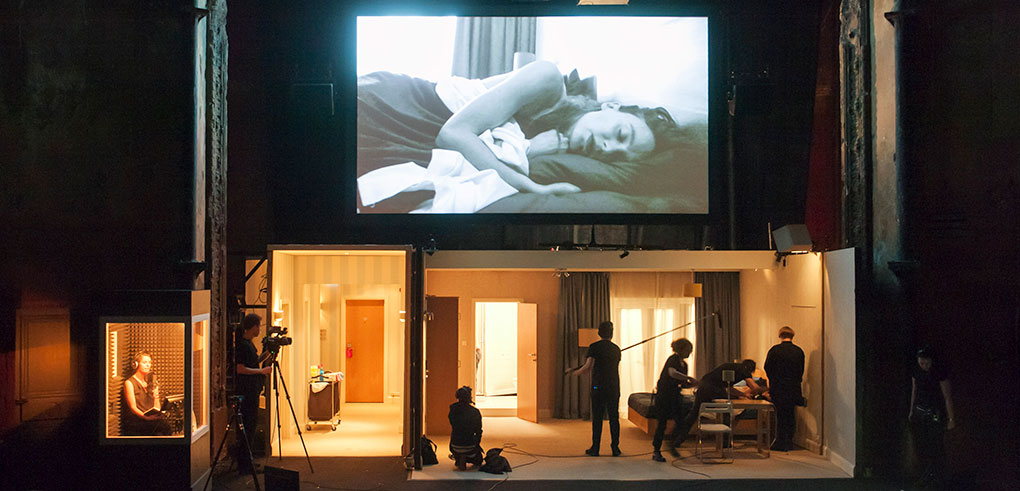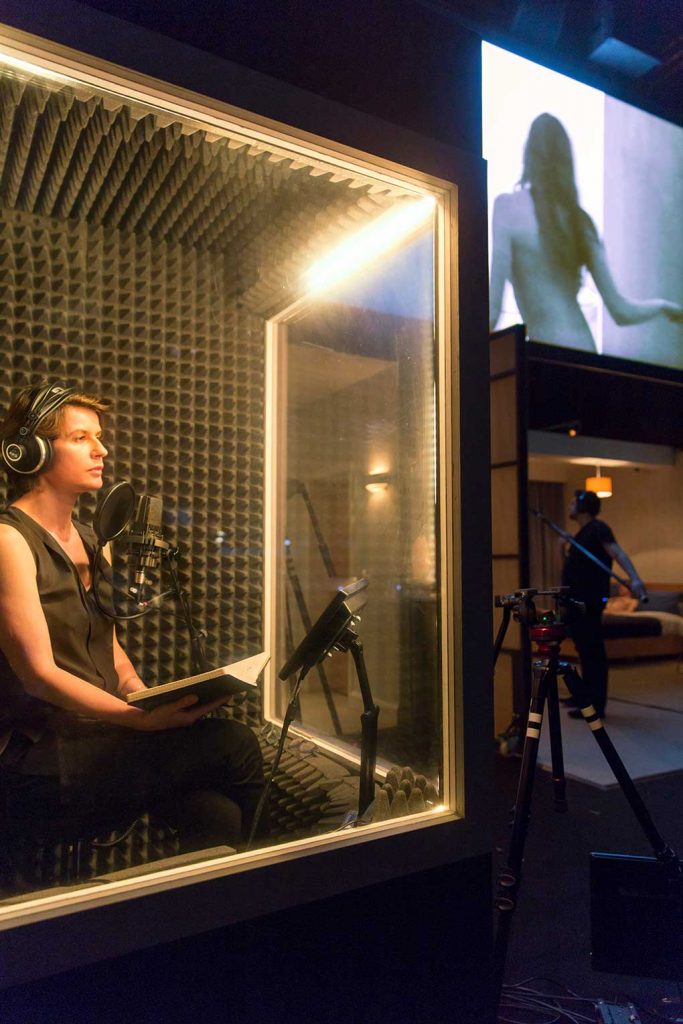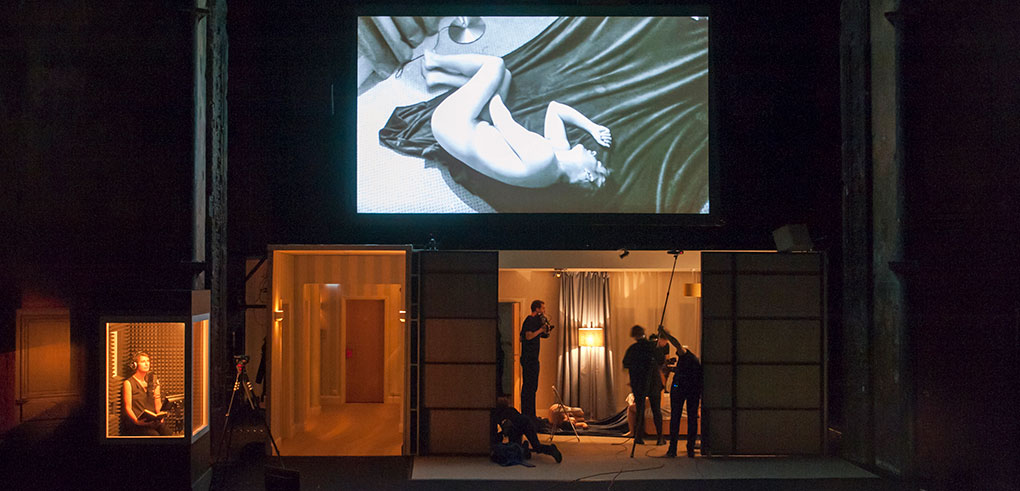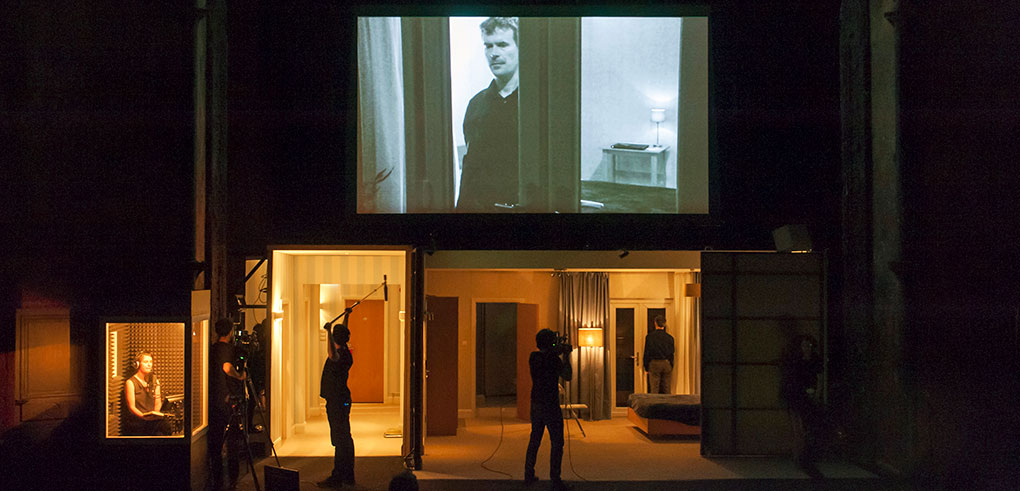This is a bit of a delayed reaction post. Pawn attended the Wednesday 3 October performance of The Malady of Death (La Maladie de la mort) by Theatre des Bouffes du Nord, at Barbican Centre. But, it’s taken me a while to get around to writing about it, and to clarify my thoughts on the piece.
La Maladie was written by Alice Birch, based on a 1982 novella by Marguerite Duras. This production is hard to describe, so bear with me. The basic story is that of a man and a woman in a hotel room. The man has hired the woman, for a rather high fee, to spend a series of nights there with him, as he tries to learn how to love, how to admire, how to relate, intimately, with another.
The set is of a hotel room, the hallway outside, a window upstage looks over a courtyard and the sea, beyond. The hallway leads upstage, and we can see one or two other room doors along it. An elevator lurks upstage right, we are lead to believe.
To far stage right, however, is a small sound booth. A woman sits in it, dimly lit. Before her a stand with pages on it. She is the narrator, hers is the predominant voice we hear. The two characters, the woman and the man, are not silent throughout, but any thoughts they have, are spoken by the narrator.
That’s not the whole story, nor the whole cast, however. For this is a live piece of film making. Above the set is a projection screen, and upon that screen is a film maker’s view of what’s happening in front of us, augmented by interwoven clips from other settings, such as the woman’s private life, or the beach beyond the window; the elevator we hear but cannot see. Around the set are three camera teams, a sound man with a boom mike, a couple of stage hands and dressers. These folks are not on the periphery, they are in the middle of the action, all beautifully choreographed. Never do they get in the way of each others shots.
Key to the story telling here — and I shan’t get into the story itself — is the frequent transition from the male to the female gaze. The woman undresses and lays out on the bed. The man looks at her, but it’s not just that he looks at her, it’s how he looks at her. He makes a comment, and the woman looks at him. Again, it’s the how that matters.
So this is commentary, then, not just on how men and women regard each other, not just on isolation and personal distance, not just on prostitution and pornography (the man a frequent user of such), but a holistic examination of these themes, a realization of their inter-dependency upon each other.
The work is impressive and compelling. The story, I found, fell, at times, into easy tropes. Sometimes the characters seemed to resort to actions simply for the shock factor, or for the In Your Face aspect. As a whole, it was a grand new kind of performance, pushing at the edges of film and theatre in ways we haven’t seen before. But story, no matter how it is told, must still speak for itself, and here, Duras’s story let me down.
Performances were brave and bold by Laetitia Dosch as The Woman and Nick Fletcher as The Man. Irene Jacob narrated, Katie Mitchell directed, Paul Clark composer. The final show at Barbican is this evening, 6 October 2018.




